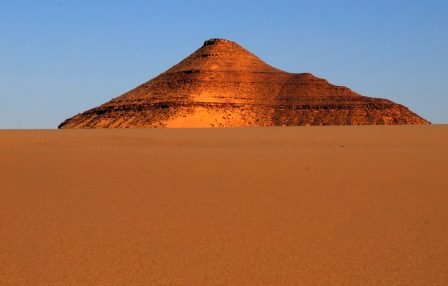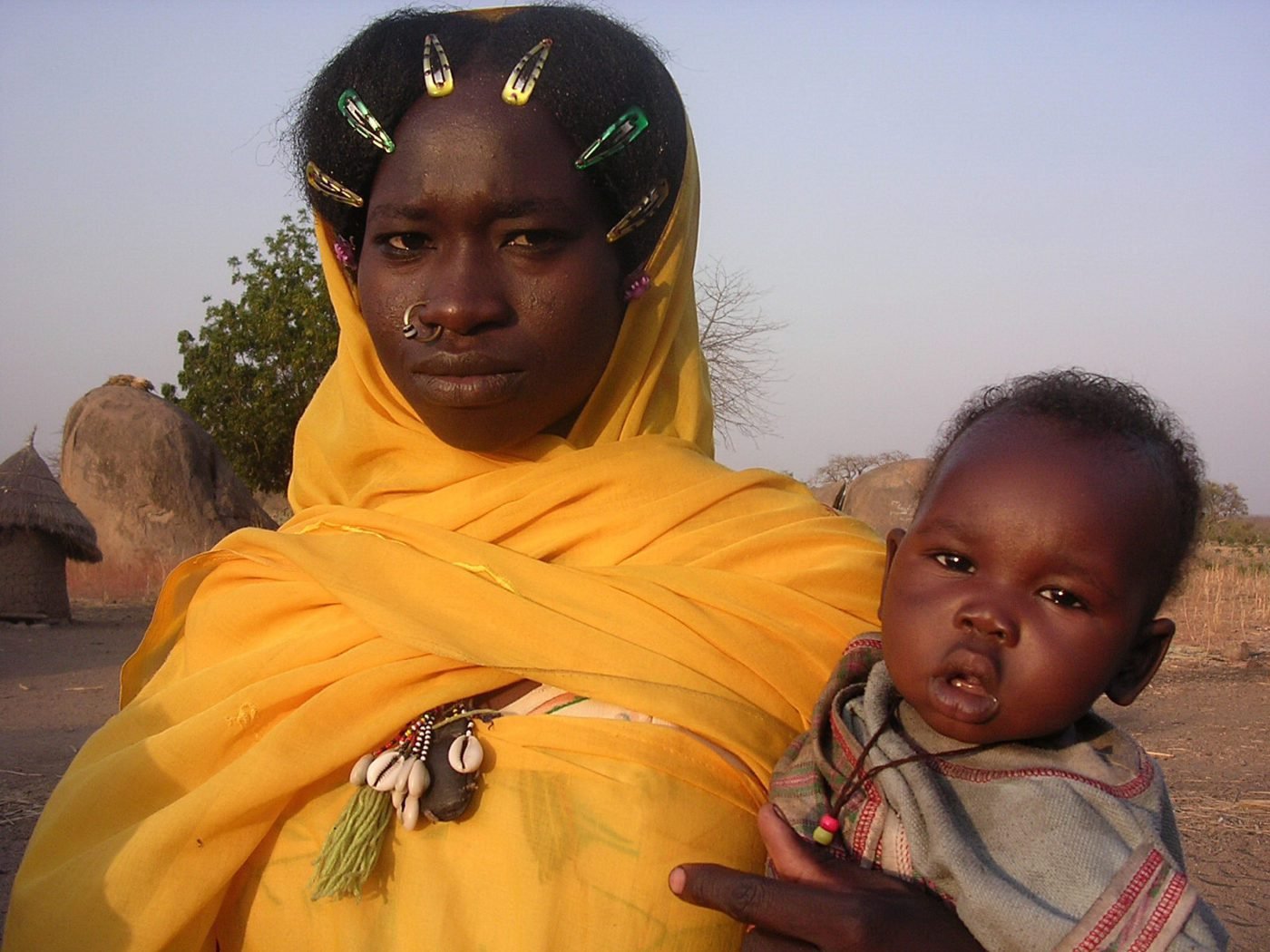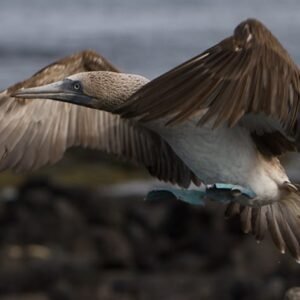[vc_row][vc_column][trx_section][vc_tta_tabs][vc_tta_section title=”Highlights” tab_id=”1449208778331-f30d2fa3-c18c”][vc_column_text]Highlights include:
- Wandering through the golden pyramids at the Meroe Royal City
- Enjoying the warm hospitality from some of the warmest people in the world, the Sudanese
- Going back in time while visiting ancient necropolises built thousands of years ago
- Cruising along the Nile on a scenic boat ride
- Witnessing unique rituals and traditions of the tribes in southern Ethiopia
- Sipping on coffee and tea in a Nubian family’s home in a Nubian Village
[/vc_column_text][/vc_tta_section][vc_tta_section title=”Itinerary” tab_id=”1449208778879-fcec8e78-e9ba”][vc_column_text]
Day 1 – Arrival to Khartoum
Upon arrival in the Khartoum Airport, you’ll be picked up and taken to your hotel for check-in
Built where the Blue and White Niles meet, Khartoum defies expectations. Home to some of the world’s most hospitable people as hosts, it is also a mix of the old and new, with flashy, modern buildings built alongside some fascinating souqs, all with stunning Nile views.
Overnight: Khartoum
Meals: none
Day 2 – Khartoum – Western Desert – Karima
After breakfast at the hotel, we begin the journey northward through the Western Desert. The desert is unbelievably flat, with unobstructed 360° views, until we reach Wadi Muqaddam, like an oasis with its many acacia trees.
We’ll stop at the “chai houses” along the way, which are simply a sort of Spartan “motorway restaurants” in the desert, where local truck drives usually stop for a quick meal and some rest before continuing on. In the afternoon, we’ll arrive at Karima, where we will check-in at the charming Nubian Rest House, just at the feet of Jebel Barkal.
Overnight: Nubian Rest House, Karima
Meals: B, L, D
Day 3 – Karima – Jebel Barkal and the necropolis of El Kurru
A landmark in the Nubian Desert, Jebel Barkal (“Jebel” means mountain in Arabic) can be seen from several kilometres away. At the foot of this wonderful and isolated red sandstone mountain, considered holy since the ancient times, stands a large temple dedicated to the Pharaohs of the New Reign and to their patron, Amon. Amon’s ancient “Pure Mountain”, the Olympus of the Nubians, was the religious Nubian heart for more than 1,000 years. Besides the ruins of the big temple, there are still several sculpted granite rams that were supposed to border a long avenue that probably led to the pier on the Nile. In the mountain wall there is a large room decorated with bas-relief.
The Jebel Barkal archaeological sites are listed on the UNESCO World Heritage list. The royal necropolis of the ancient city of Napata, the Nubian capital (from 800 to 400 BC) before the Meroitic period, had a large number of pyramids located in three different places: a few hundred metres north of Jebel Barkal; a dozen kilometres southwards from the holy mountain, in El Kurru; in Nuri, located on the other bank of the Nile.
After lunch we will continue southwards to the village of El Kurru where we find one of the necropolises of the ancient capital, Napata. Here we can visit one tomb, which is excavated in the rock under pyramids — partially collapsed — and decorated with images of the Pharaoh, the gods, and multicolour hieroglyphic inscriptions. Not far from here there is an interesting site of petrified wood, an ancient forest with hundreds of huge trunks. In the late afternoon we return back to Karima.
Overnight: Nubian Rest House, Karima
Meals: B, L, D
Day 4 – Karima: Boat trip on the Nile – Necropolis of Nuri
After breakfast, we’ll have a chance to experience daily life of the Sudanese people at a market in Karima. We’ll then board a small motorboat for a scenic cruise along the Nile, enjoying the beautiful sand stretches and cultivated islands along the river. A little further north, there was once the beautiful granite rocky formations of the 4th Cataract, which prevented the Nile from flowing slowly and formed many rapids that obstructed navigation. In April 2008, the Dam of Merowee was completed and the flooding of the artificial lake started.
We’ll enjoy a picnic lunch in that area, and then head to the archaeological site of Niru, where we can see may pyramids, including the great Taharqa. After a little walk to stretch our legs and snap some photos, we’ll return to the Nubian Rest House for dinner and an overnight stay.
Overnight: Nubian Rest House, Karima
Meals: B, L, D
Day 5 – Karima – Old Dongola – Nubian Villages – Karima
Early this morning, we’ll visit the animal market of Tengasi, and then will follow the Nile until we reach the archaeological site of Old Dongola. Here we will find the remains of a Christian Coptic temple with marble columns as well as several ruins of what are likely churches situation on the banks of the Nile. This area is the central part of the Nubian region. Here the population lives in small villages nestled between yellow sand dunes. They have their own language, and although they do practice Islam, here they are not as strict with their practice. Women don’t have to cover their faces, and readily speak to foreigners. Some of the houses in the Nubian Villages are painted with floral patterns, however most of them are completely white. We’ll enjoy a picnic (that we bring) in a Nubian house, and sample tea and coffee prepared by the Nubian family, before returning to the Nubian Rest House in Karima for dinner and the night.
Overnight: Nubian Rest House, Karima
Meals: B, L, D
Day 6 – Karima – Bayuda Desert – Meroe
After breakfast, we’ll cross over the Nile to enter the Bayuda Desert. The Bayuda Desert is an area bounded by the loop formed by the Nile between the 4th and the 6th Cataract and characterised by sharp black basalt mountains, most of them volcanic and typically cone-shaped. They alternate with level pebble stretches and large valleys crossed by dry wadis where only little vegetation survives and gazelles can sometimes be seen. We are likely to meet isolated groups of Bisharin nomads, who live in family groups in small huts made of intertwined branches close to the rare water wells, with their caravans and herds of camels and donkeys.
We’ll then cross the Nile again via a ‘pontoon, ‘local ferry boat’. These small ferries are often a hive of activity, and we may find ourselves sharing space with people, donkeys, goats, and even sometimes camels! As we’re crossing the Nile, an image of over 40 pyramids, some perfectly preserved, will appear in front of us – the Royal Necropolis of Meroe. We’ll head to the Meroe Camp, which boasts a beautiful view of the pyramids. Tonight’s accommodation will be in comfortable, fully-furnished tents, dinner and an overnight stay.
THE MEROE CAMP
Meroe Tented Camp is located in Bagarwyia, (about 230 km north of Khartoum) overlooking the beautiful pyramids of Meroe. Accommodation consists of 22 twin-bedded tents (4x4m), tastefully-furnished. Each one has its own private separate bathroom hut with shower and toilet (located a short walk from your tent). The camp is located 2 km from the Royal Necropolis. Each tent is equipped with a veranda with two comfortable chairs to relax in front of the astonishing view of more than forty pyramids. The electricity in the tents is supplied by a generator working till 11:00 pm. The camp is managed by an Italian manager with the help of well-trained Sudanese staff.
Overnight: Meroe Camp
Meals: B, L, D
Day 7 – Necropolis of Meroe and the Royal City of Meroe
This morning will be dedicated to visiting the pyramids of Meroe. The Royal Necropolis of Meroe is located at about 3 km from the Nile on some hills covered by yellow sand dunes. Several pyramids stand out with their sharp shapes against the clear sky. Each one has its own funerary chapel with the walls fully decorated with bas-reliefs that show the king’s life and offerings to the gods.
In the afternoon we move along the Nile to visit the ruins of the royal city. Excavations that have taken place here confirm that the town of Meroe once covered a large area, and the royal city was located in a central position surrounded by suburbs and a boundary wall. Most of the area where the city is located, formed by many small hills covered by red clay fragments, has yet to be excavated.
Overnight: Meroe Camp
Meals: B, L, D
Day 8 – Meroe – The Temples of Naga and Mussawarat – Khartoum
Today we will drive for about 30 km on a desert track among many camel thorn acacia trees to visit two archaeological sites.
The site of Naga is one of the two centres that developed during the Meroitic period. In Naga, in a typical Saharan environment with rocks and sand, we find a temple dedicated to Apedemak (1st century AD), a wonderful building with bas-relief decorations depicting the god with a lion’s head, the Pharaoh, noblemen, and several ritual images.
A few meters away, we notice a small and odd piece of construction with arches and columns, named “kiosk”, where we can notice Egyptian, Roman and Greek building styles. Not far away we reach another temple dedicated to Amon with many statues of rams and beautiful gates decorated with bas-reliefs.
We then continue to Mussawarat, not far away from Naga. This settlement is located in a beautiful valley crowned by hills. Here the ruins of a very large temple are visible. This temple once played an important role, and its main characteristic, the “Great Enclosure,” is comprised of many constructions and boundary walls which surround a temple built in the 1st century AD. The large number of elephants represented on these walls has led many archaeologists to believe that this animal used to have an important role in this area. Beyond the big wadi (dry riverbed) there is another temple — restored by a German archaeological mission — dedicated to the god Apedemak.
We’ll have our lunch in the area, and then head to the hotel in Khartoum for a check-in and overnight stay.
Overnight: Khartoum
Meals: B, L, D
Day 9 – Khartoum – City Tour and Nuba Wrestling
After breakfast at the hotel, we’ll explore the city of Khartoum. Starting first at the Archaeological Museum, we’ll see two beautiful temples rescued by UNESCO and moved from the Lake Nasser area, when they were flooded. We’ll then cross the confluence between the Blue and the White Nile near the Presidential Palace, and view the site where General Gordon was bheaded by the Mahdi’s troops in 2885. We’ll reach Omdurman, the old capital of Sudan, where we see the Mahdi’s Tomb from the outside, before visiting the Khalifa’s House, which holds a small museum about the Mahdyia.
We’ll eat a tasty lunch at a local restaurant on the Nile, before visiting the colourful souk of Omdurman. Finally, we’ll move to Khartoum North to attend the traditional Nuba Wrestling, which is quite a site!
Return to the hotel
Overnight: Khartoum
Meals: B, L
Day 10 – Departure
This morning after breakfast at your hotel, you’ll be transferred to the airport for your flight home.
Meals: B
Thanks for travelling with Finisterra!
[/vc_column_text][/vc_tta_section][vc_tta_section title=”Sample Hotels” tab_id=”1449208780126-5c656139-d532″][vc_column_text]
Karima – Nubian Rest House
Meroe – The Meroe Camp
Please Note that these are just sample hotels and are subject to change without notice
[/vc_column_text][/vc_tta_section]
[vc_tta_section title=”Important” tab_id=”1449208780126-5c656139-d535″][vc_column_text]
VISAS: Canadians must have a valid visa to enter the country. You may obtain a visa by contacting us. This is subject to change without warning. Obtain a visa before arrival to avoid possible complications. Allow at least two months between your visa application and the intended date of travel. Visas are not granted automatically to prospective travellers.
PASSPORT: Your passport must be valid for at least 6 months beyond the date you expect to leave Sudan. Visas and passports are the responsibility of the individual travellers.
PLEASE NOTE: This is a fascinating trip for ADVENTUROUS souls! Northern Sudan is developing its tourism industry and infrastructure which means some of the accommodation is quite basic, roads can be very rough, journeys long, and full of surprises. That being said, this is an amazing travel opportunity for truly intrepid travellers.
[/vc_column_text][/vc_tta_section]
[vc_tta_section title=”Inclusion & Exclusion” tab_id=”1449208780765-5fd2d40a-5e8d”][vc_column_text]
Tour Inclusions:
- 9 nights accommodation (4 star hotels, furnished tented camps, Nubian Rest Home)
- All transport and sightseeing as per itinerary
- Meals per itinerary (9 breakfasts, 7 lunches, 6 dinners)
- English speaking cultural guide
- Boat excursion on the Nile River
Tour Exclusions:
- International airfare to Sudan (can be arranged through nicola@finisterra.ca)
- Compulsory archaeological, passport registration, travel and photo permit fees (240 Euros paid locally in cash upon arrival to Sudan)
- Meals and activities not mentioned on itinerary
- Visa for Sudan and visa authorization (required)
- Video camera permits (currently $20 USD per site, paid in cash)
- Personal expenses (laundry, telephone, soft drinks and alcoholic drinks, etc.)
- Gratuities to drivers, guides, porters, restaurant staff, etc.
- Medical and travel insurance (can be arranged through nicola@finisterra.ca)
[/vc_column_text][/vc_tta_section][vc_tta_section title=”Pricing” tab_id=”1451423726575-050c89ba-0b4f”][vc_column_text]
- Date: Custom Departures$3095 USD per participant Double / Twin
Prices may vary depending on time of year.
Single Supplement – $795USD
[/vc_column_text][/vc_tta_section][/vc_tta_tabs][/trx_section][/vc_column][/vc_row]
















